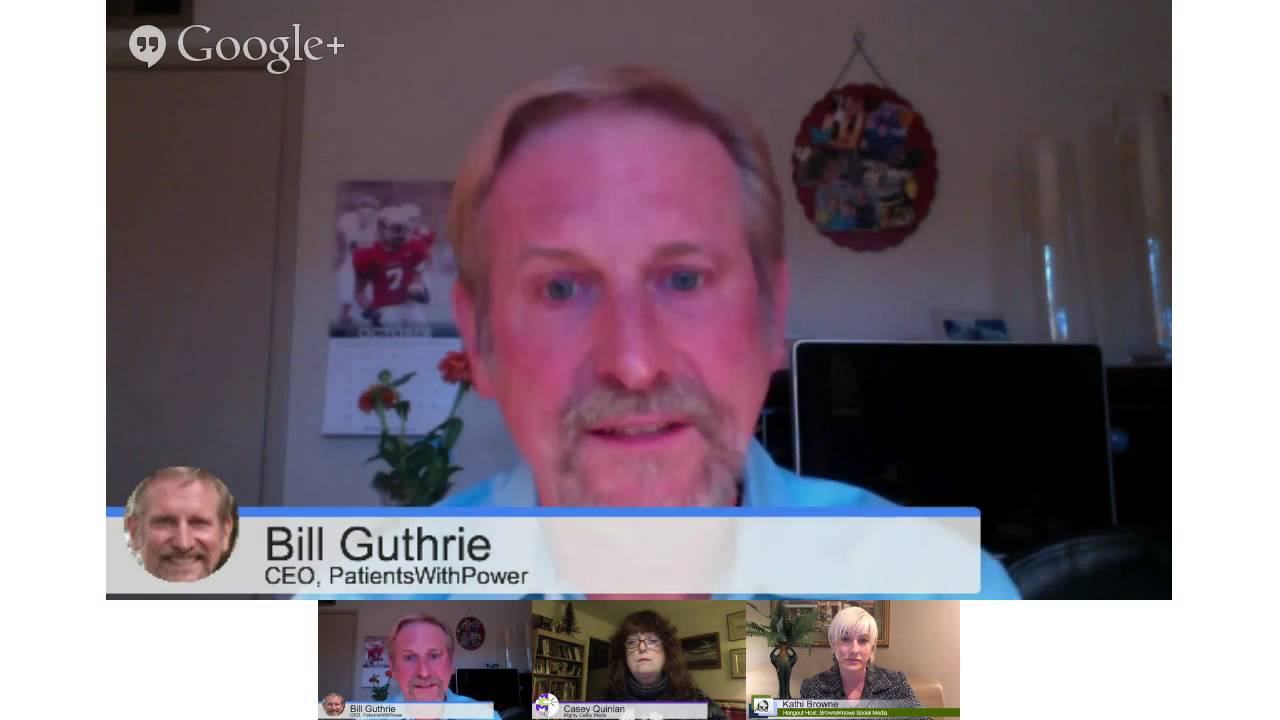Now that I have, for my sins, been tagged as a patient engagement expert, I figure that entitles me to the occasional rant on the topic of the healthcare system – particularly the US iteration thereof – and its utter inability to understand how to connect and communicate effectively with its customer base: patients. If you’ve been a patient, for anything beyond a short trip to your primary care doc for something simple (and easily diagnosed) like a laceration or a minor infection, you know that arriving at the doors of The Medical-Industrial Complex is like being the new kid in school. There’s an old joke about bacon and eggs – the chicken is involved, but the pig is committed. In the ongoing sketch comedy/Shakespearean tragedy that is medical care. the clinical teams who deliver care, and the facilities in which they deliver it, are most certainly involved. Patients? We’re fully committed. We are engaged, we are fully present. What we’re not getting from the delivery side is an authentic invitation to engage. en•gage•ment: noun, a formal agreement, i.e. to get married; an arrangement to do something at a specific time; the act of being engaged, i.e. “continued engagement in trade agreements” Seems simple, right? Patient appears, asking for care. Clinical professionals deliver that care. Patient happy, clinicians happy, everybody wins. Oh, wait – did the doctor wash her hands before she started the physical exam? If the patient is aware of the importance of handwashing in preventing infection, and asks if the doctor lathered up and rinsed according to protocol, does that patient risk being labeled “difficult” or “aggressive”? If so, so much for patient engagement. Given that the statistics on handwashing in healthcare settings aren’t at 100% (~ 90% for RNs, < 75% for attending MDs in a 2008 study at an Ohio hospital), clinical folks…
Back when I slaved in the depths of Hunter Thompson’s “shallow money trench,” we had a phrase we deployed whenever we thought the grownups were keeping us in the dark. We would say we’d been sent to Mushroom Land, where one is kept in the dark and fed sh*t, the better to keep us from making, or spotting, trouble. These were the very same grownups who, every four years like clockwork, would look at the calendar and say, “Holy crap, there’s a Presidential ELECTION this year?” But I digress. The medical-industrial complex has, for eons, kept its customers (commonly called “patients”) in Mushroom Land pretty consistently. For a very long time, that was facilitated by a lack of access to scientific knowledge for the common human, but that started to shift in the 19th and 20th centuries, as public education rose across most parts of the globe. Of course, “math phobia” and “science denial” are still pernicious little devils, but the average person with an 8th grade literacy level and an internet connection can find out about just about anything. I had the privilege of being awarded a seat at Dartmouth’s 2014 Summer Institute for Informed Patient Choice, or SIIPC14 for short, in late June 2014 (last week, as I write this). The purpose of the conference was to chew on topics and issues related to not keeping patients in the dark when it comes to making informed decisions about their health, their healthcare, and their relationships to the medical care teams they work with to gain or retain “best health.” This event had some serious meat on its bones, both in reputational throw-weight of the presenters and breadth of stakeholder groups represented in the audience. Dartmouth itself is no stranger to uber-smart-ness, particularly in healthcare, given the work and thinking that emerges from Geisel School of Medicine and the Dartmouth-Hitchcock Medical Center (one of…
I’ve been heard in these precincts and elsewhere on the topic of employer-backed group health insurance, and the reasons why I believe it’s an idea whose time has gone. Granted, I’ve felt like a little voice crying in the wilderness, but with a firm conviction that I was just an early adopter of this opinion. So imagine my glee when a headline popped up in my Google+ news feed that the Robert Wood Johnson Foundation had published a study showing a distinct downward trend in the number of companies paying for employee health insurance. The key findings: The percentage of non-elderly people with employer-sponsored insurance declined 10.2 percentage points from 69.7% to 59.5% over the study period while pubic coverage increased 3.1 percentage points. While most states saw “significant declines” in employer-sponsored insurance coverage, the range was wide—from New Hampshire (73.8% coverage) to New Mexico (48.0% coverage). Employer-sponsored insurance coverage varied by income. It fell less (2.8%) for high-income groups (400% federal poverty level [FLP] or above) than for those with lower incomes (200& FPL or below) where the fall was 10.1%. Nationally, the percentage of private-sector firms offering employer-sponsored insurance fell from 58.9% to 52.4% (although the percentage of workers eligible for coverage at firms that offered employer-sponsored insurance held steady). The take-up rate also fell from 81.8 percent to 76.3 percent. Small firms offering coverage declined (67.7% to 56.3%) while at large firms it remained essentially unchanged. Single-person premium costs doubled ($2,490 to $5,081); family premiums rose 125 percent ($6,415 to $14,447); employee contributions increased (17.5% to 20.8% of the total premium). In short, less than 60% of adults who are employed full-time now have employer-backed group health insurance coverage. My response in the G+ thread? HALLELUJAH. The prospect of losing group health insurance scares the pants off of those who still have that coverage. What I…
Unless you’ve been living under a rock since October 1, you’ve heard that Healthcare.gov, the site where Americans can shop for health insurance, had a rocky start in life. OK, it was an epic mess. I was one of the people who was eager to jump on the site on October 1, since I haven’t had health insurance since I completed cancer treatment in 2008. That cancer diagnosis and treatment put me in the pre-existing condition pile, which put renewal insurance premiums for my individual coverage at an eye-popping level. You can read the details on that here. On October 1, I hopped on my Mac, and surfed over to Healthcare.gov … and had the same experience everyone else seemed to be having: That continued over the following seven days, with me developing a nice little flat spot on my forehead from head/desk-ing my way through many attempts per day at getting past the first step of creating a profile on the site. Even when I had completed that process of creating a profile, every time the site announced “Success! Click here to continue.” I clicked “there” and … got a blank page. On October 8, I realized that I, and the site’s developers, might have missed something. I was using Google Chrome, my default browser, and the dominant browser across the web. Could it be that the dim bulbs that built the Frankenstein that is the Healthcare.gov site optimized the site only for native browsers? I opened Safari, and discovered that yes, they were indeed that dim, because even though the site loaded at the speed of a slug on Quaaludes, it did load. And “Success!” allowed me to continue the enrollment process. No blank pages. I re-enacted scenes from 1995, when I would log on to Netscape to download email…

I had the chance to participate in a Hangout on Air with Kathi Browne, who is the founder/moderator of the Google+ Healthcare Talk community. If you’re on G+ and in the healthcare industry, that community is one you want to join – lots of discussion on topics from healthcare policy to social media to patient safety to care quality. It’s invitation-only – if you’d like to join, hit the G+ link above and ask Kathi to add you to the community. Last night’s (Monday, Oct. 28, 2013) Hangout on Air was a conversation with Bill Guthrie, CEO of Patients with Power, a new web-based platform for shared decision-making for cancer patients and their oncology teams that’s in beta at UCSF’s lung cancer oncology unit and also as a survival-planning tool at Cornell-Weill/New York Presbyterian’s ob-gyn onco unit. Decision-making for cancer patients – shared, or not – is a firehose. Patients with Power does what its name promises, it gives patients access to the information they need to make an informed decision, information that’s solidly based in evidence-based medicine since it’s based wholly on National Comprehensive Cancer Network (NCCN) guidelines for cancer treatment. Bill has given me a demo of the tool, and it’s superb. He also did a walk-though last night. Give a watch/listen: //www.youtube.com/embed/FPTIjDwirDI

I had the great good fortune of being tagged as an ePatient Scholar for the 2013 edition of Stanford Medicine X. That allowed me to sit at the feet – literally, since the ePatients were the mosh-pit for the three day conference plenary stage – of some of the best and brightest minds in healthcare. And guess what? Many of those best/brightest were … PATIENTS. MedicineX (a/k/a MedX and #medx) is the uber Patients Included medical conference. It grew from seeds planted at conferences like Health 2.0 and Patients 2.0, for which seeds-to-beautiful-flowers gardener credit goes to Dr. Larry Chu and his team from Stanford Anesthesiology AIM Lab, who seem to prestidigitate rabbits out of hats without breaking a sweat. Or the hats. Or the rabbits. MedX – in my opinion, at least – trumps every other Patients Included event by not just including patients, but by putting them front and center throughout the program. In fact, I cannot think of a session that I attended that didn’t have someone who was there primarily as a customer of healthcare (commonly called “a patient”) on the platform, presenting or participating in a panel discussion. My ePatient socks were knocked off from jump thanks to the opening keynote by Michael Seres and Marion O’Connor on “The New Engaged Patient,” which was the morning keynote on Friday. Michael uses his blog as his personal health record, up to and through a lifetime battle with Crohn’s disease that led to his becoming the 11th patient to ever receive a bowel transplant, and only the 6th to survive that transplant experience. Michael is hilarious, and Marion is exactly the sort of caring brainiac any patient would like bedside as s/he battled a life-threatening illness. Here’s the video of their session: The rest of the day played out as a firehose of ePatient awesome,…
Welcome to the MightyCasey–hosted edition of the HealthWorksCollective #HCSM Review, a peer-reviewed compendium of timely, on-topic writing about healthcare from across the web. Last Friday, I put out a call for posts about healthcare costs and/or health insurance innovation for the HCSM community. Here’s the brain candy that flew over the MightyCaseyMedia transom: First up: an examination of STD occurrence alongside STD testing costs in the New York metro area from ClearHealthCosts.com (@chcosts), written by Sherry Mazzocchi. This is a deep dive into the incidence of STDs across New York City, with snapshots of what consumers actually pay for STD testing at a number of facilities across the region. Runs from $0 (for members of a subscription medical practice) to $600 for women who visit a Westchester County practice. Like Uwe Reinhardt has said for years, healthcare pricing is chaos behind a veil of secrecy. For patients looking to pierce that veil and direct-pay for their care, ClearHealthCosts’ founder Jeanne Pinder offers up this post – New ways of paying: Cutting out the middleman. Seems like everybody’s looking for a better way to hold down health costs. In a number of cases, that means patient and provider are getting together directly, without the middleman (the insurance company). You could start asking, “How much is that?” and acting on the answer. With Oct. 1 and the dawn of the ACA’s new health insurance marketplaces, Jeanne Pinder shares What it means to you: Oct. 1 and buying health insurance. Maybe you avoid the topic of health insurance, but you can’t any longer. If you’re not covered by employer insurance, Medicare or Medicaid, you will need to know things about buying insurance (or choosing not to buy it). Her post offers some actionable advice on how to figure out what the marketplace means to you. From one of my…
This story from PBS Newshour clearly shows how important it is to ask questions, and shop around, when it comes to prescription drug prices. Think a generic drug guarantees a lower price? Not so much. Watch this story, and learn how the same generic drug can cost anywhere from $11 to $455. The best way to get the lowest price? The same way you shop for shoes, or appliances: research online, ask local retailers, and make an informed decision.

It was recently revealed that an Excel error contributed to the European fiscal crisis, and a continuing global economic recession/depression. Paul Krugman called the revelation the Excel Depression in the NY Times. Certainly lives are at stake when the success or failure of large economies are at risk, but not nearly as many lives as are at stake every day given the lack of transparency (and even, in some cases, plain truth) in bioscience research and medical outcomes reporting. Ben Goldacre gave a barn-burning TED talk, “Battling Bad Science,” in 2011. He gave another one in 2012 in which he called the data manipulation in scientific research the “cancer at the core of evidence-based medicine.” His point? We cannot make a meaningful decision in the absence of ALL the data. Tim Berners-Lee, the man who invented the actually-useful-to-humans WWW part of the Internet, has consistently called for raw data – ALL the raw data – NOW. Paul Levy, the former CEO of Beth Israel Deaconess Hospital, recently blogged about the failure of the Journal of Pediatric Surgery to reveal, in a report on a surgery for sunken-chest deformity, a widely-reported death of a teenage boy after said surgery, even though that boy’s case is used as an example of avoidable medical error in safety bootcamps for medical interns and residents. Boggles the mind, doesn’t it? Even if the data is fully reported, the PR geeks who write up the announcement of results might get that report 100% wrong. Witness the recent contretemps over a University of Chicago study on patient engagement, shared decision-making, and healthcare cost control. A full outline of that mess, by ePatient Dave deBronkart in Forbes, will give you 411 on that story. The Cliff’s Notes: it was a post-discharge survey, not a full study; it measured attitudes, not outcomes; and the press release was sent out on…
I’m still recovering from the month of May. I was all up in the healthcare, pretty much 24/7, which differs not-much from my usual roll, other than that in the period of three weeks, I was in DC for eight of 21 days, May 14 through June 5, attending HM13 (the annual meeting of the Society of Hospital Medicine, which I covered for The Hospitalist magazine podcasts) and Health Data Palooza IV as just-me on a Consumer Circle scholarship. What I saw and heard at both conferences made me hopeful for the future of healthcare … sort of. As inspiring as both of them were, I found the SHM conference more of a hope engine for just-e-patient me than the rah-rah tech-fest that was #hdpalooza. Granted, HM13 was organized and run by the medical society that has a big upward swing on its membership, and on the income of said members, which means that there was a breadth and depth of content that wouldn’t be available at non-clinical conferences. I got plenty of mental floss out of both of them. Here are the high (and low) lights: Still glaringly missing from all of this rah-rah is the actual, real-world voice of the patient – HM13 can be (somewhat) forgiven for that, since it’s a medical society annual conference. I will note that, in all my interviews for HM13 podcasts, the question, “How can patients help?” was warmly welcomed by everyone asked, and answered with enthusiasm and insight. Figuring out how to break the walls down between clinicians and patients – “gimme my damn data,” two-way edition – using health IT systems as the wedge seems to be a place to start. But letting patients help there is utterly crucial. Speaking of sitting too long … time for a bike ride to my…



